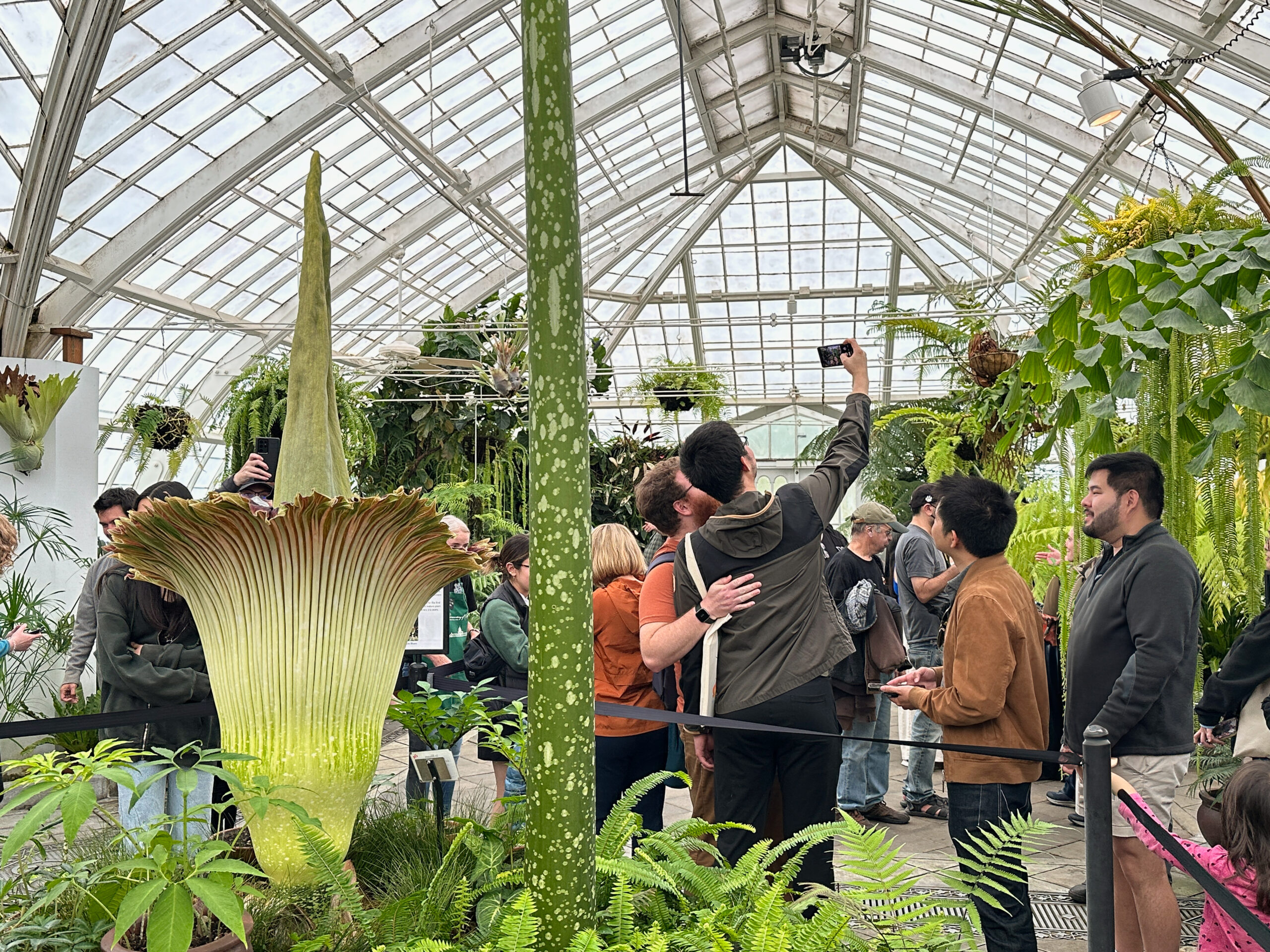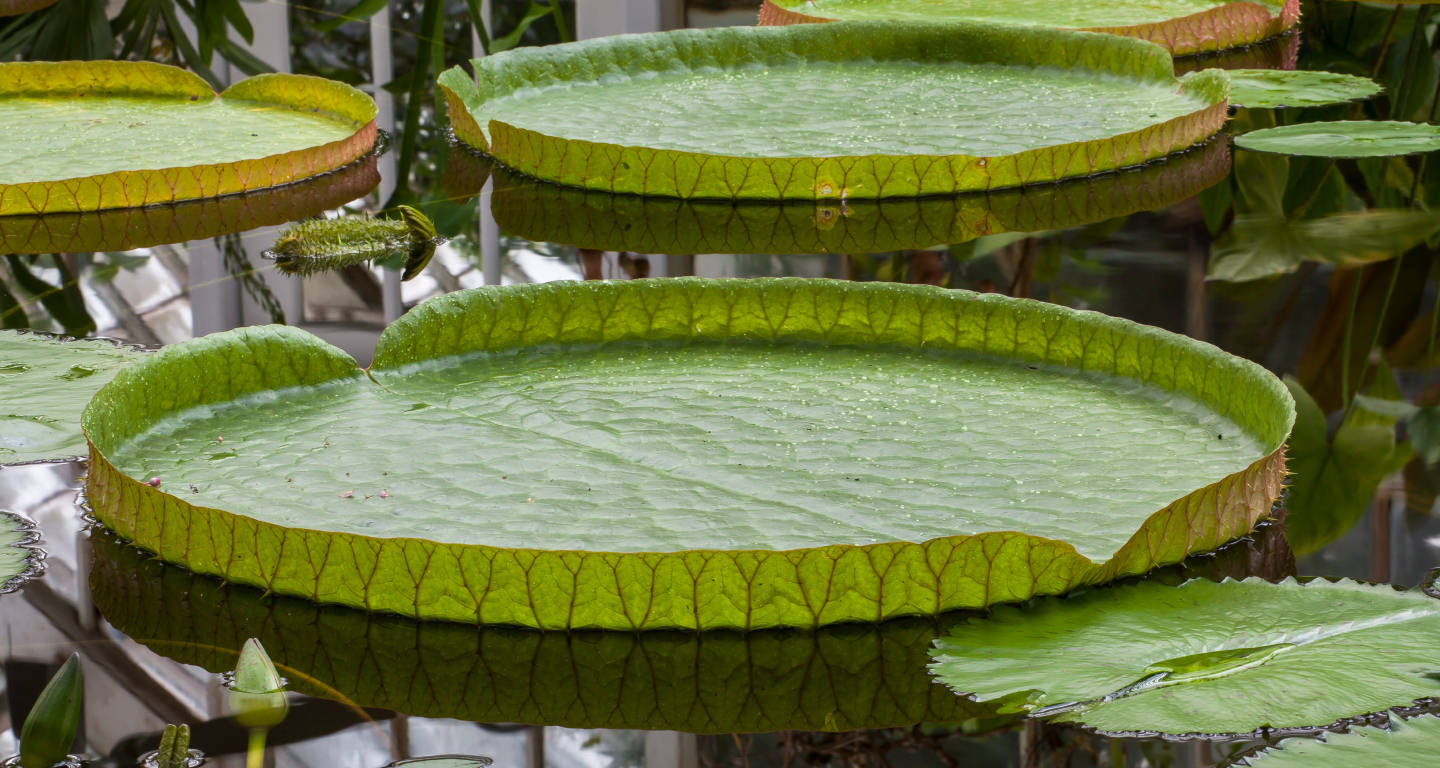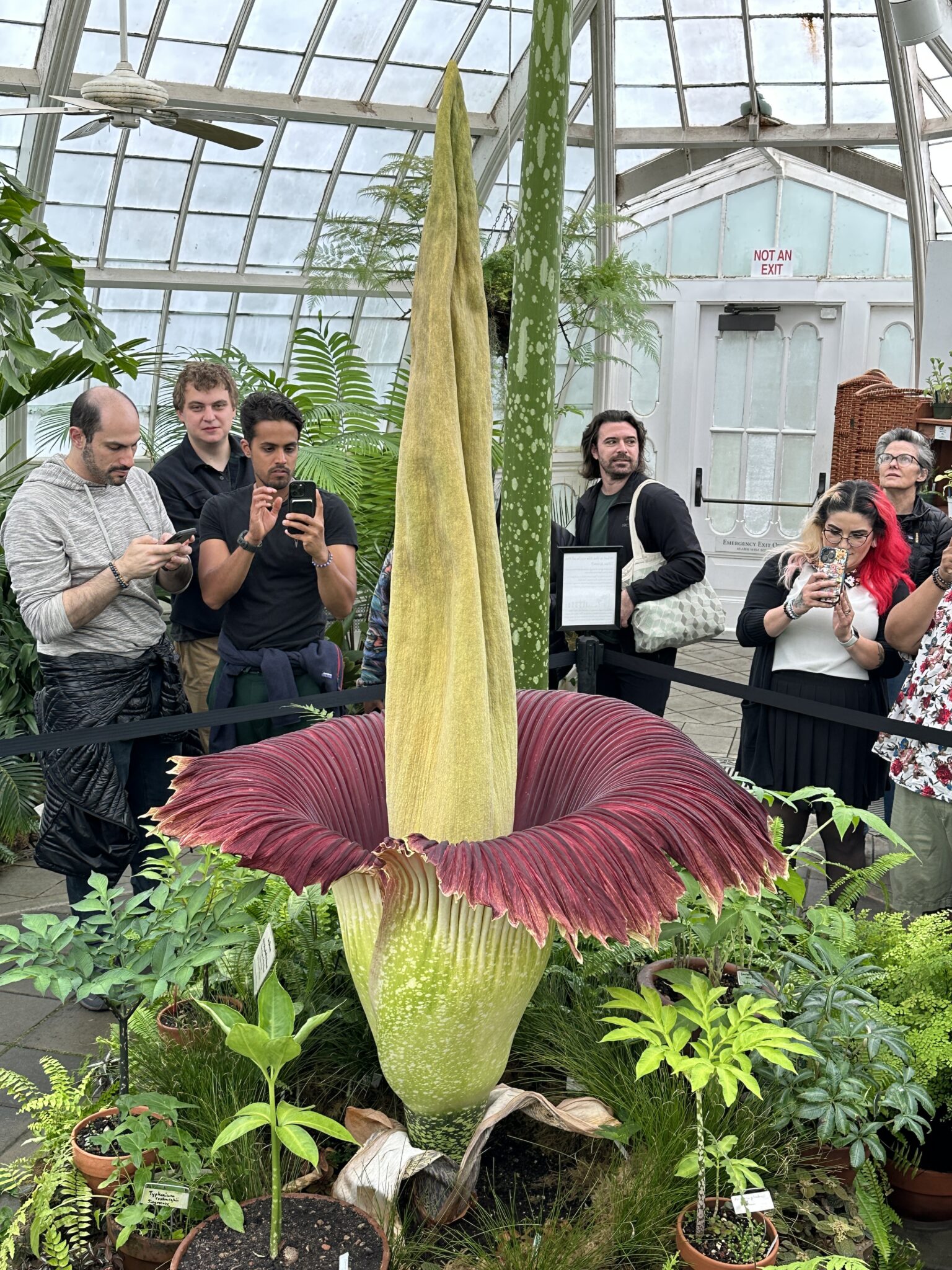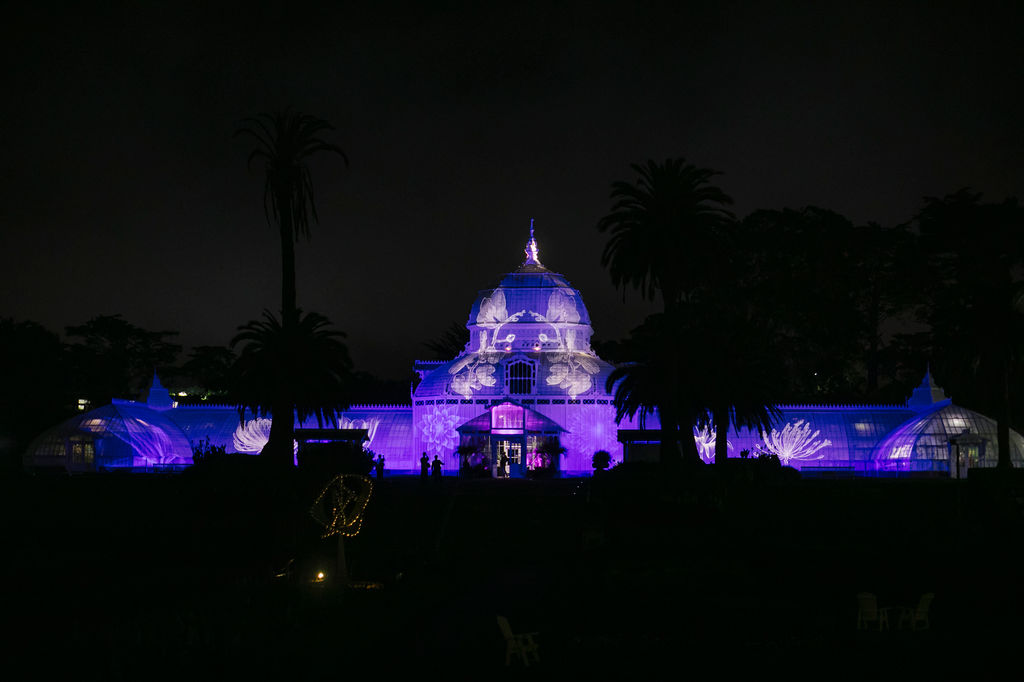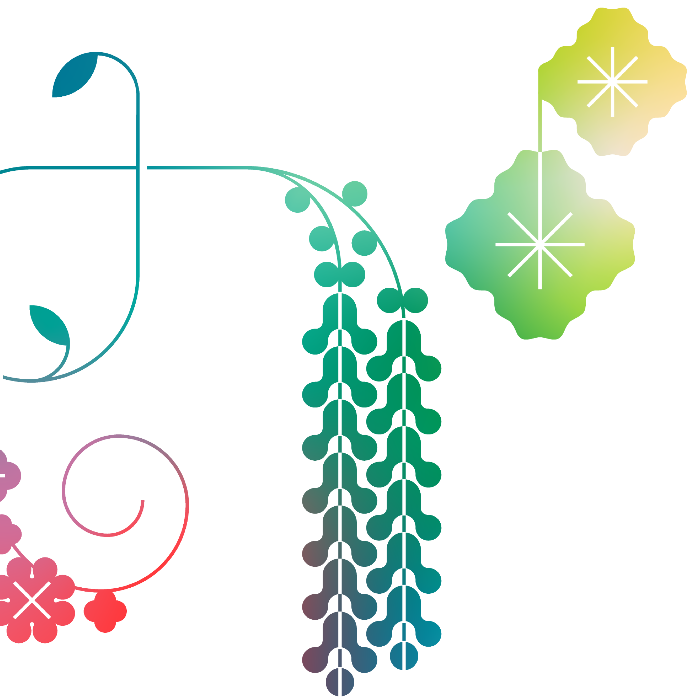Experience the incredibly large, notoriously stinky corpse flower bloom!
July 14, 2025 Bloom Update:
Chanel’s bloom has now wilted, but is still on display in the West Gallery. Chanel’s final day on display will be Tuesday, July, 15.
Gardens Members, San Francisco Residents, Museums for All, Millitary/Veterans get in for free. Please bring proof of ID and benefits card if applicable.

 Watch our Livestream
Watch our Livestream
Corpse Flower FAQs
The corpse flower, also known as Titan Arum (Amorphophallus titanum) is the largest unbranched inflorescence (many tiny flowers acting as one) in the plant kingdom and only blooms once every 3-5 years for just 2 days.
These fleeting blooms can grow up to 10 feet tall and are famous for smelling like rotting flesh! Corpse flowers are native to Sumatra, Indonesia and are listed as Endangered on the IUCN Red List.
This individual nicknamed ‘Chanel’ last bloomed at the Conservatory of Flowers in summer 2022.
July 10, 2025 Bloom Update:
Chanel is just past peak bloom but still on display in the West Gallery! We recommend visiting today, as Chanel is nearing the end of their bloom cycle. Chanel the corpse flower follows their own timeline, so we can’t say for sure what it will look like tomorrow.
Thursday, July 10 hours are 10am-4:30pm, last entry at 4pm. Purchase your tickets online to save time!
If you can’t make it, or just want the latest info, check out our livestream, subscribe to our e-newsletter and follow us on Instagram and Facebook for frequent Chanel updates!
July 10, 2025 Bloom Update:
Chanel is just past peak bloom but still on display in the West Gallery! We recommend visiting today, as Chanel is nearing the end of their bloom cycle. Chanel the corpse flower follows their own timeline, so we can’t say for sure what it will look like tomorrow.
Thursday, July 10 hours are 10am-4:30pm, last entry at 4pm. Purchase your tickets online to save time!
Gardens Members, San Francisco Residents, Museums for All, Millitary/Veteran get in for free. Not yet a member? Join or renew today!
Photo ID proof is required for the following Admissions categories:
- Military/Veterans
- Museums for All (Please also bring your benefits card)
- American Horticultural Society (AHS) Reciprocal Garden Member
- San Francisco Residents
- Current ID or Driver License showing San Francisco address OR
- Current utility bill or lease/rental agreement showing name and San Francisco address with valid photo ID
Smelling “bad” is relative. Corpse flowers may smell unpleasant to some humans, but the scent is highly attractive to carrion beetles and flies!
The corpse flower’s infamous scent, often compared to rotting meat, is a deception device that tricks carrion beetles and flies into visiting and pollinating flowers!
These insects lay eggs on decaying animals so their larvae can feast when they hatch. They are attracted to the scent of decomposition, and the corpse flower smells just like it.
The corpse flower bloom also heats up on the first evening of the bloom to further disperse the odor!
The Corpse Flower, also known as Titan Arum (Amorphophallus titanum) has the largest unbranched inflorescence (many small flowers working as one) in the world, which can be up to 10 feet tall!
The largest flower in the world is Rafflesia arnoldii, which produces a bloom that measures 3 feet (1 meter) across.
The Corpse Flower, also known as Titan Arum (Amorphophallus titanum) is endemic to the Indonesian island of Sumatra. It grows on the steep hillsides in tropical rainforests.
Its Indonesian name is “bunga bangkai” which translates to “corpse flower” in English.
Yes, the Titan Arum is listed as Endangered on the IUCN Red List, with less than 1,000 individuals remaining in its native habitat. Its population is currently declining due to habitat loss.
A major cause of deforestation in Indonesia is expansion of oil palm plantations. Palm oil is an ingredient in many candy bars, cookies, shampoos, and cosmetic products.
We can help by pressuring manufacturers to use sustainably produced pam oil, and conserving critical forest area.
Indonesia’s rainforests are believed to be home to 10% of the whole world’s plant species, and is also home to critically endangered species including the Sumatran Tiger, Javan Rhinoceros, and Sumatran Orangutan.
The plant goes through years of dormancy and leaf cycles between blooms.
The enormous Titan Arum leaf is so large it is often mistaken for a tree! The leaf photosynthesizes and produces energy, which is stored in an underground corm, similar to a potato.
Once enough energy is stored up, the Titan Arum may produce a bloom. The inflorescence takes about a month to mature and is only open and pungent for two days before the spadix (pointy cone-shaped structure in the middle) withers and collapses.
After typically blooming for the first time at 7-10 years of age, a Titan Arum can bloom again every 3-5 years.
Strollers are not allowed inside the Conservatory of Flowers and may be parked outside the Conservatory on the grass.

